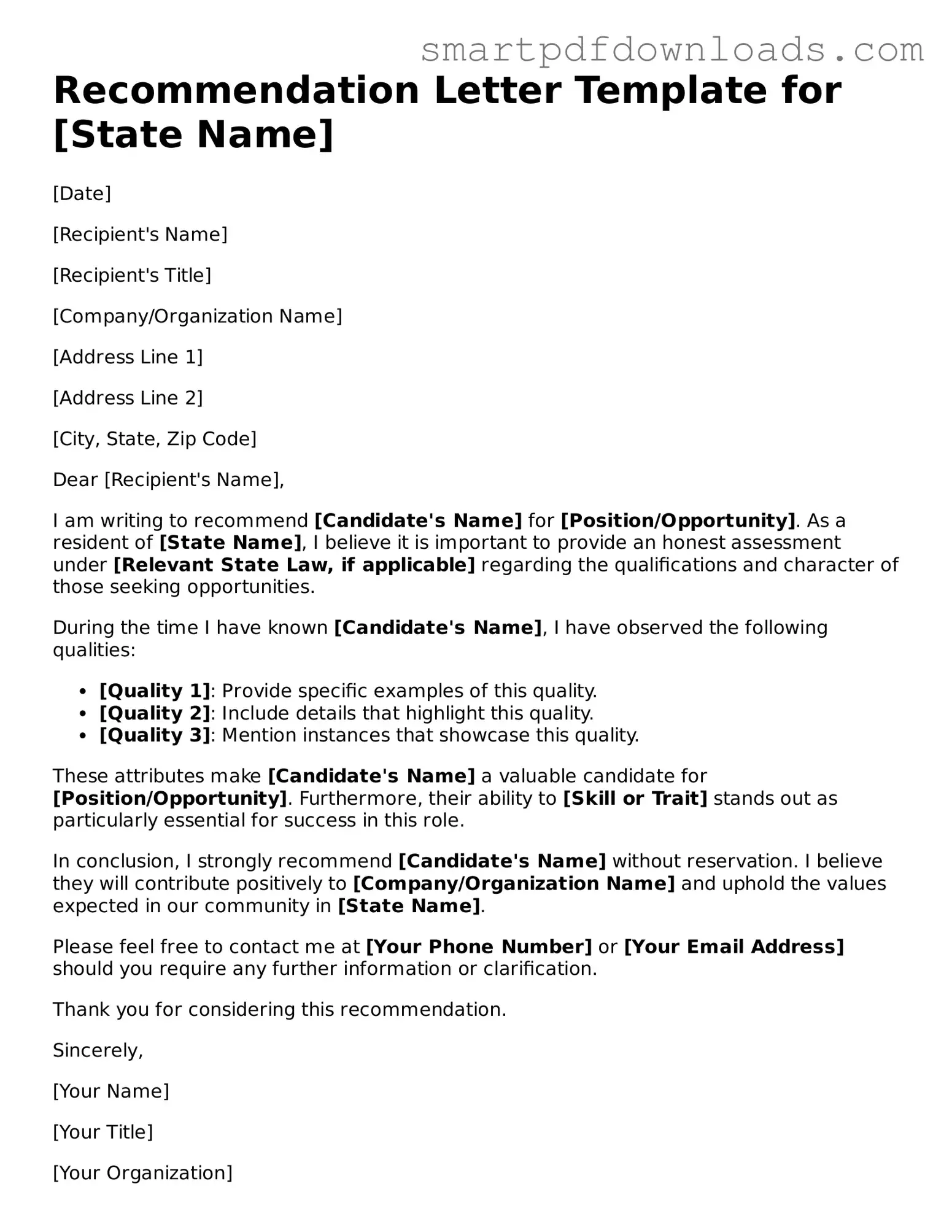Recommendation Letter Template for [State Name]
[Date]
[Recipient's Name]
[Recipient's Title]
[Company/Organization Name]
[Address Line 1]
[Address Line 2]
[City, State, Zip Code]
Dear [Recipient's Name],
I am writing to recommend [Candidate's Name] for [Position/Opportunity]. As a resident of [State Name], I believe it is important to provide an honest assessment under [Relevant State Law, if applicable] regarding the qualifications and character of those seeking opportunities.
During the time I have known [Candidate's Name], I have observed the following qualities:
- [Quality 1]: Provide specific examples of this quality.
- [Quality 2]: Include details that highlight this quality.
- [Quality 3]: Mention instances that showcase this quality.
These attributes make [Candidate's Name] a valuable candidate for [Position/Opportunity]. Furthermore, their ability to [Skill or Trait] stands out as particularly essential for success in this role.
In conclusion, I strongly recommend [Candidate's Name] without reservation. I believe they will contribute positively to [Company/Organization Name] and uphold the values expected in our community in [State Name].
Please feel free to contact me at [Your Phone Number] or [Your Email Address] should you require any further information or clarification.
Thank you for considering this recommendation.
Sincerely,
[Your Name]
[Your Title]
[Your Organization]
[Your Address Line 1]
[Your Address Line 2]
[Your City, State, Zip Code]
